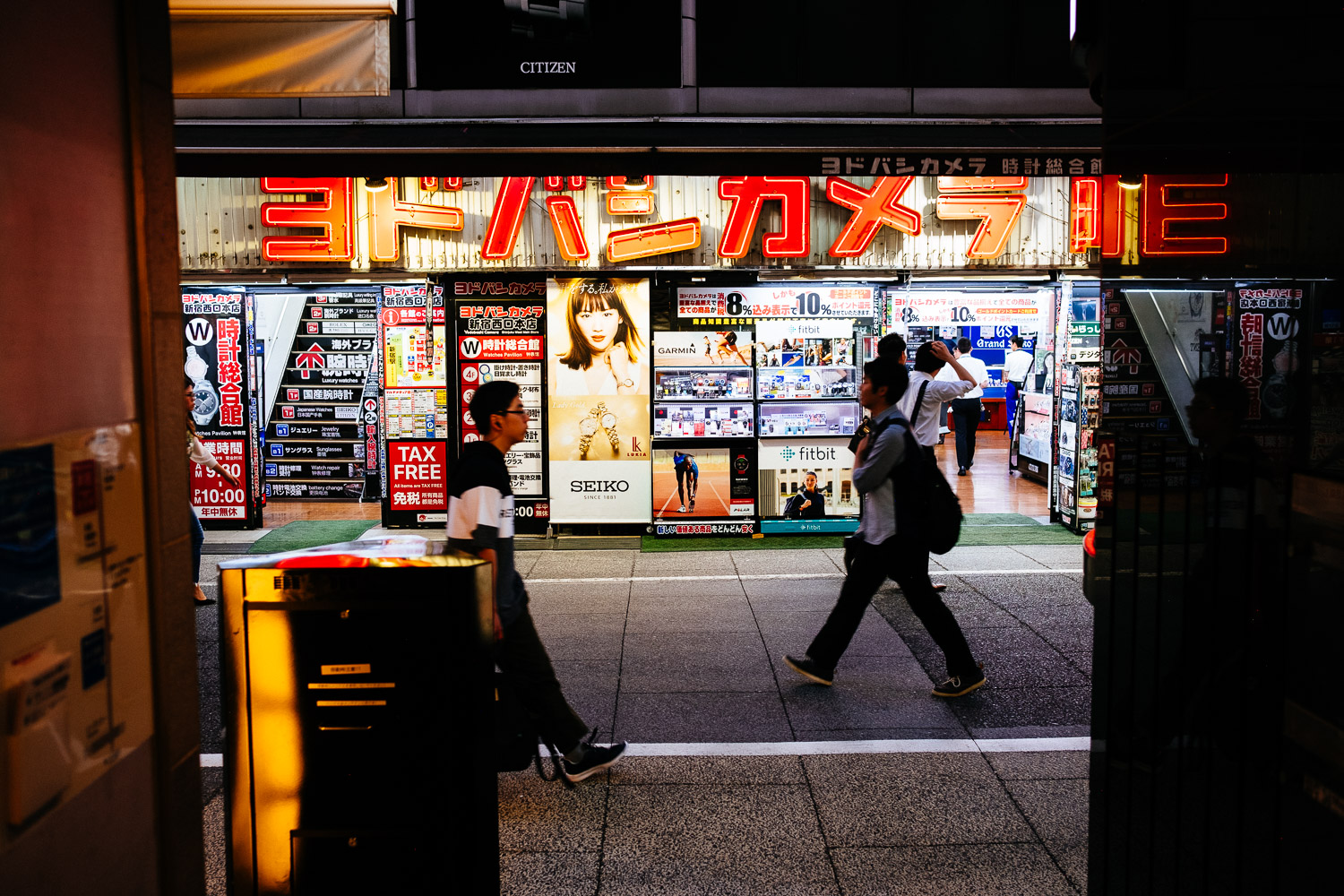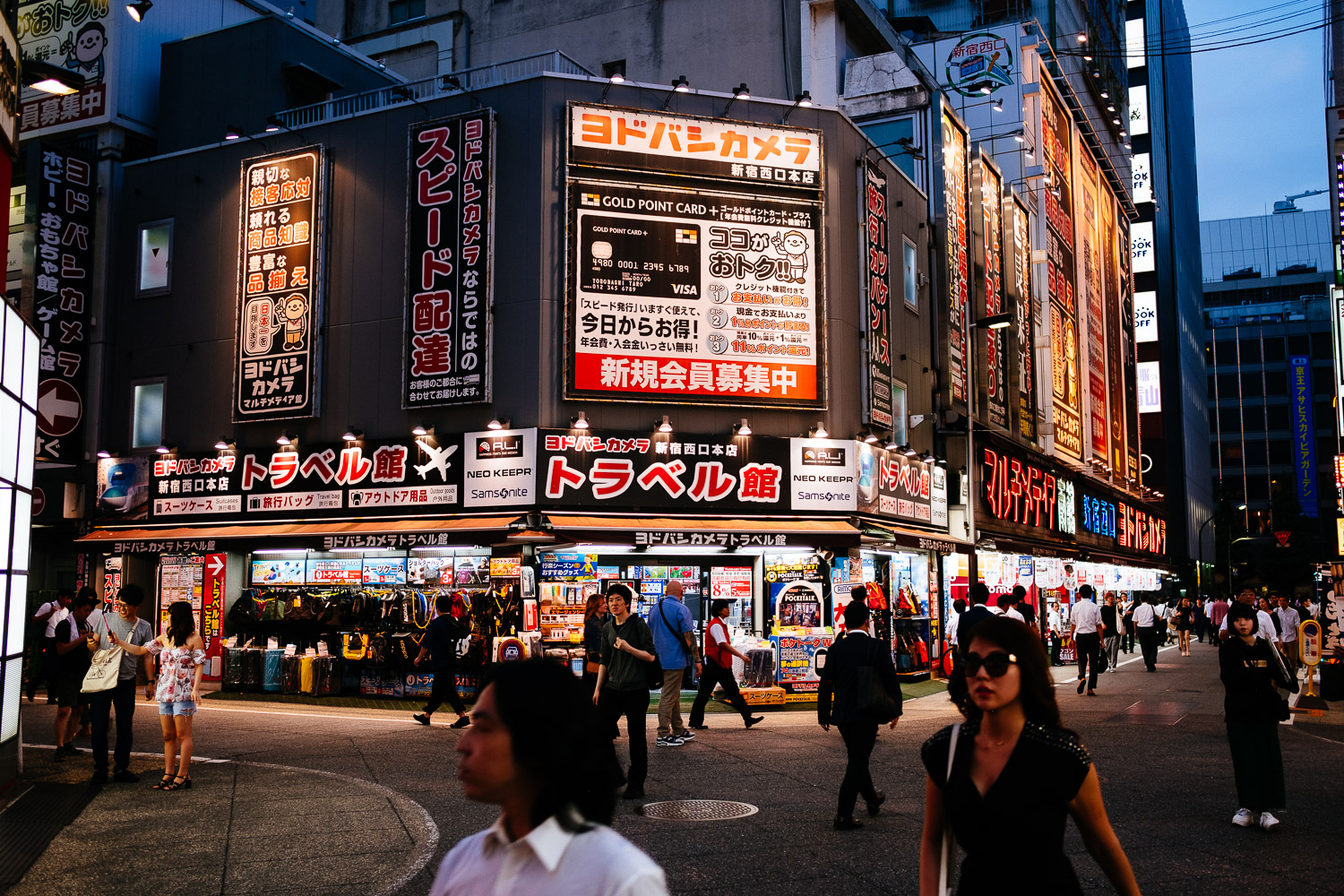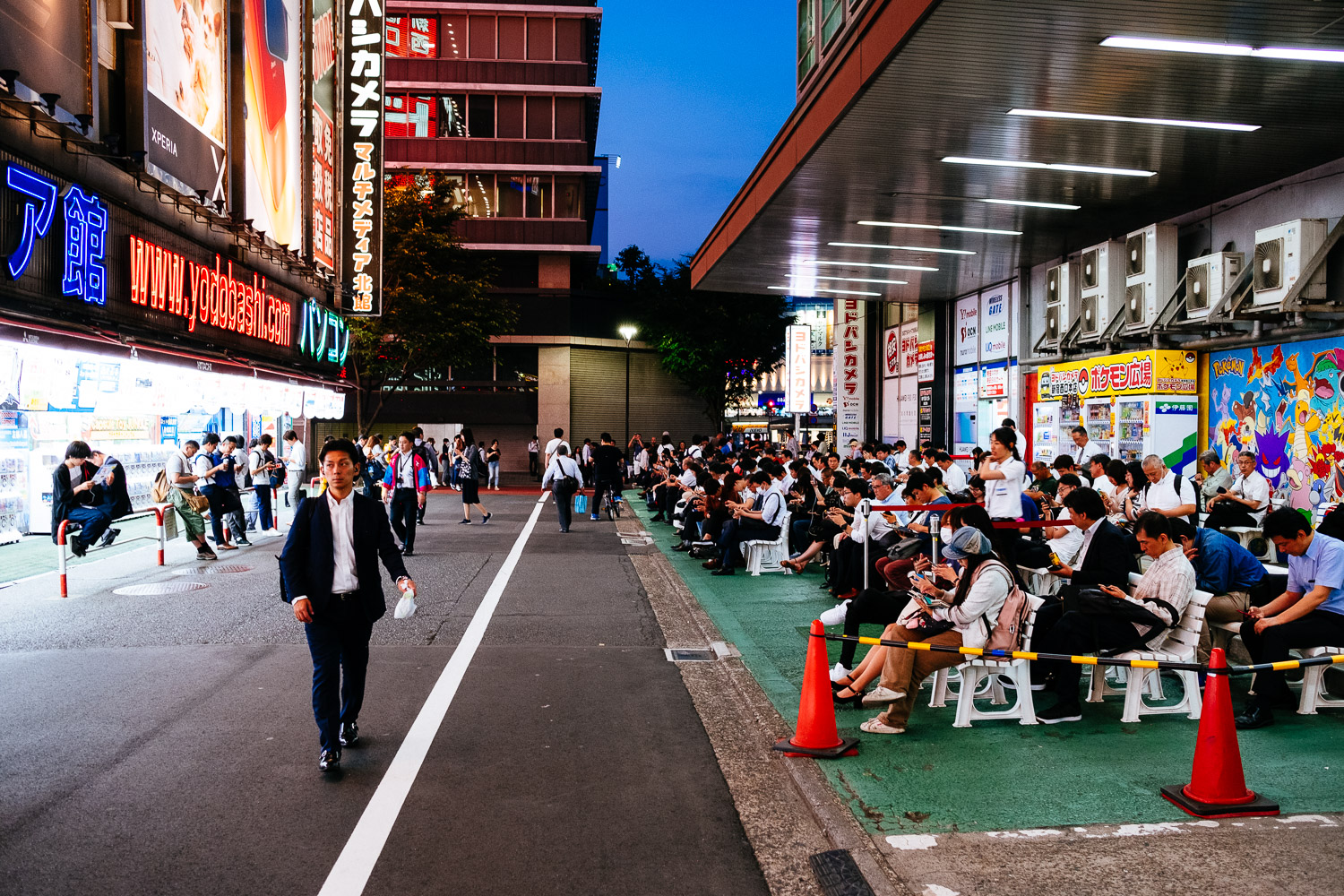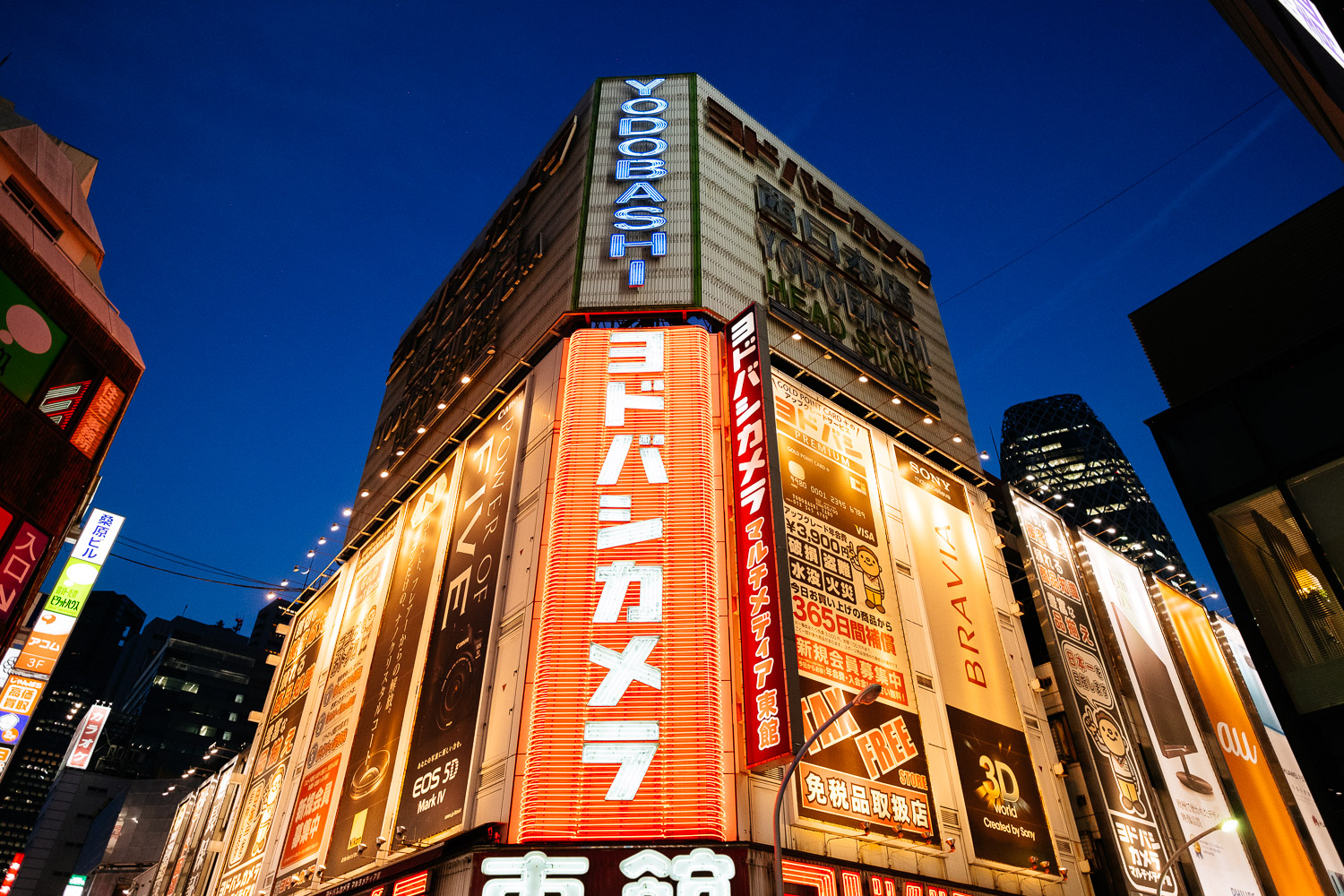 FUJIFILM X-Pro2 (23mm, f/2.8, 1/100 sec, ISO400)
FUJIFILM X-Pro2 (23mm, f/2.8, 1/100 sec, ISO400)
Photography always played an important part in my life. Just like music and HiFi. But both hobbies seem to be endangered today. What happened?
About 12 years ago Apple introduced the iPhone. A mobile phone that looked radically different to what was available back then. A phone without any buttons but a big touch screen instead. Back then my company phone was a Blackberry, it was a big deal to have email on a phone but of course there was internet or iPod or camera.
Maybe I should say something regarding the pictures of this blog post. I took them in Shinjuku, Tokyo last month. Around the Yodobashi camera store, the biggest camera store in the world. In the 70s, at the high time of SLR cameras, 30% of all cameras sold in Japan where sold in this shop.
 FUJIFILM X-Pro2 (23mm, f/2.8, 1/160 sec, ISO200)
FUJIFILM X-Pro2 (23mm, f/2.8, 1/160 sec, ISO200)
 FUJIFILM X-Pro2 (23mm, f/2.8, 1/100 sec, ISO250)
FUJIFILM X-Pro2 (23mm, f/2.8, 1/100 sec, ISO250)
I got my first iPhone in early 2011. It was an iPhone 4. There was email, internet and even a camera but its image quality was poor. My second iPhone was the iPhone 6 plus and its camera was a big step forward. Especially in good light the image quality was decent. I started to take a picture now and then when I had no camera with me.
Last autumn I upgraded to the iPhone Xs and that was another jump in image quality and speed. Now I found myself relying on the phone camera more often than before.
There are other advantages like a very good panorama function or a very close minimum focus distance or a simple way to shoot a selfie. And of course the biggest advantage that you immediately can share a picture with the push of a button.
 FUJIFILM X-Pro2 (35mm, f/2, 1/100 sec, ISO200)
FUJIFILM X-Pro2 (35mm, f/2, 1/100 sec, ISO200)
 FUJIFILM X-Pro2 (35mm, f/2, 1/210 sec, ISO200)
FUJIFILM X-Pro2 (35mm, f/2, 1/210 sec, ISO200)
Why still use a camera? First of all the image quality of a real camera with a larger sensor is still vastly superior to the output of the best smartphone camera. The more the light level drops the bigger the difference. The resolution is higher and the noise level and artefacts are much lower. The dynamic range of a larger sensor is much better too but todays smartphones use some tricks like multi exposures merged into one to handle a scenes that require a lot of dynamic range. A selfie in front of a sunset without flash is no big deal for my iPhone Xs.
Better image quality is one thing but I think the most important difference in between a system camera and a phone is the shooting experience. The viewfinder, the buttons, dials and aperture rings. Here is where cameras like the higher end Fujis are extremely satisfying. No need for a menu or touchscreen, just dials and buttons. No smartphone can give you that.
Today all modern cameras give you an image quality that is good enough even for the most demanding applications, in fact most of us will never use their full potential. What we usually do is to make a photo book now and then but most of the time the pictures will be displayed on the internet or on our TVs. So the ever increasing resolution makes no sense anymore. If your camera has 24MP you trow away 66% of the pixels in case you display them on a 4K TV in case you use them for the internet it is 90% or more. If you change to a 61MP camera you just trow away more pixels.
I think the real key is to offer a satisfying shooting experience so that you just want to take out your camera to take some pictures. A nicely handling camera with a good shutter sound and solid lenses with a real aperture ring is all it takes. That’s why I think Fuji has grown so popular.
 FUJIFILM X-Pro2 (23mm, f/2.8, 1/100 sec, ISO1000)
FUJIFILM X-Pro2 (23mm, f/2.8, 1/100 sec, ISO1000)
 FUJIFILM X-Pro2 (14mm, f/2.8, 1/100 sec, ISO500)
FUJIFILM X-Pro2 (14mm, f/2.8, 1/100 sec, ISO500)
But of course camera makers should also try to incorporate some features to close the gap to the smartphone cameras when it comes to comfort. It should be much easier to share pictures. There should be an option to have increased dynamic range for i.e. portraits against a sunset. The camera should take multiple exposures and merge them automatically in one shot.
There is some frustration from less experienced shooters that their smartphone take better images in difficult situations than their camera. But there is no need for that. There is no reason why camera makers could not integrate smart phone smartness in their cameras. I think it is false elitism to keep such features out. My main camera for more than three years now is the Fuji X-Pro2. I love how it handles especially in full manual mode but there is no reason that there is no truly intelligent all auto mode.
Camera makers will not survive if the only keep increasing the resolution. Todays sensors are already an overkill for most of us. Camera makers should focus on shooting experience and the integration of smart features. In my opinion Fuji nailed the shooting experience and Sony has dramatically improved AF with eye tracking but so far there is no camera that comes close to a “smartness” that we find in todays smartphones. After improved resolution, high ISO performance, dynamic range and eye tracking the next big thing is to improve intelligence and connectivity.

